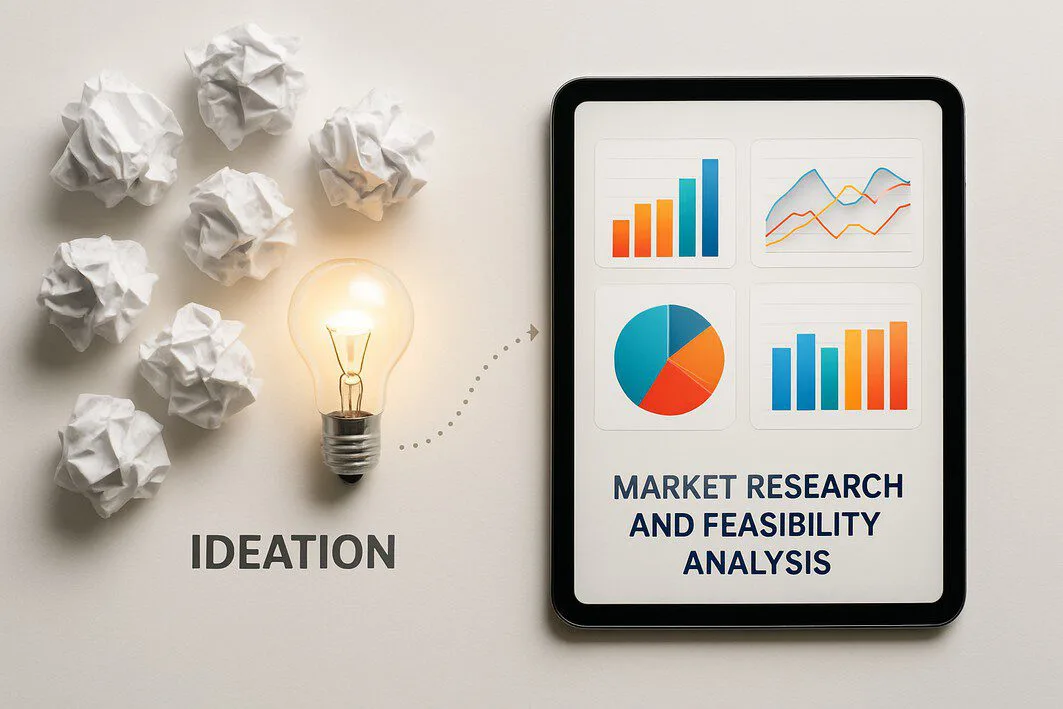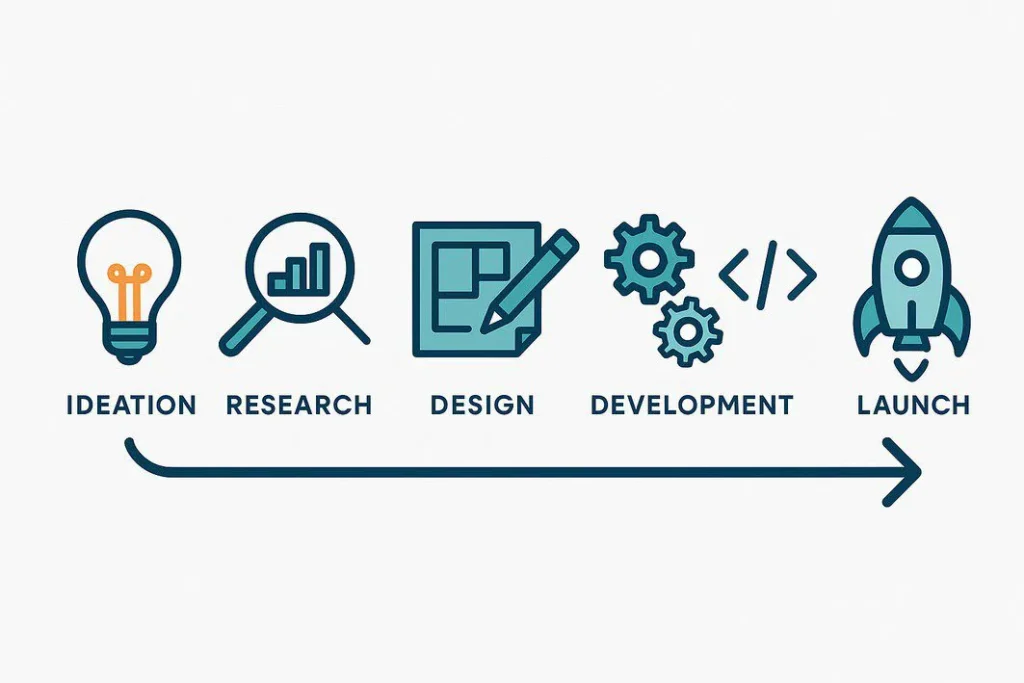From the smartphone in your pocket to the solar panels on a neighbor’s roof, every successful product begins as a simple idea. But how does that initial spark transform into a tangible item that solves a problem and provides value? The answer lies in a structured, strategic journey known as the product development life cycle.
Table of Contents
Understanding this framework is crucial for any business looking to innovate successfully. It provides a roadmap that turns abstract concepts into market-ready solutions, minimizing risk and maximizing the chances of success. This article will explain the 5 phases of product development, breaking down exactly how the product development process works from start to finish.
What is the Product Development Life Cycle?
The product development life cycle (PDLC) is a systematic, multi-stage process used to guide a new product from its initial concept all the way to its market launch and beyond. It’s a framework that organizes tasks, defines milestones, and ensures that every step—from brainstorming to customer feedback—is handled logically and efficiently.
Following a structured process prevents wasted resources and helps teams make informed decisions. Instead of guessing what customers want or how the market will react, the PDLC forces a data-driven approach, ensuring the final product is viable, valuable, and well-positioned for success.
The 5 Phases of Product Development

While the specifics can vary by industry, the PDLC is generally broken down into five core phases. Each stage has its own objectives and deliverables, building upon the work of the previous one.
Phase 1: Ideation and Concept Development
This is the “lightbulb moment” phase. It all starts with an idea, which can come from anywhere: a customer suggestion, a gap in the market, an internal brainstorming session, or a new technological capability. The goal here is not to find the perfect idea, but to generate a wide range of potential concepts.
Key activities include:
- Brainstorming: Generating a large quantity of ideas without initial judgment.
- Problem Identification: Defining the specific customer pain point the product aims to solve.
- Initial Screening: Filtering out ideas that are clearly not aligned with business goals or capabilities.
At RenewGenius, our deep understanding of residential energy needs, built from a comprehensive solar knowledge base, allows us to constantly ideate new ways to help homeowners save money and make informed decisions.
Phase 2: Market Research and Feasibility Analysis
Once a promising concept is chosen, it’s time for a reality check. This phase is dedicated to validating the idea. Is there a real market for this product? Is it technically possible to build? Is it financially viable?
Key activities include:
- Market Research: Analyzing the target audience, market size, and demand.
- Competitor Analysis: Studying existing solutions to identify their strengths and weaknesses.
- Technical Feasibility: Assessing whether the company has the technology, resources, and expertise to create the product.
- Financial Feasibility: Projecting costs, pricing, and potential ROI. This is where tools like an ROI calculator become invaluable, helping to determine if a project makes financial sense before committing significant resources.
Phase 3: Design and Prototyping

With a validated concept in hand, the team moves to the design phase. Here, abstract ideas are translated into detailed specifications and tangible models. This stage is about defining exactly what the product will be, how it will look, and how it will function.
Key activities include:
- Detailed Specification: Creating a technical document that outlines all features and requirements.
- UX/UI Design: For digital or software products, this involves designing the user experience and user interface.
- Prototyping: Building a preliminary version of the product (a model, a wireframe, or a functional sample) to test assumptions and gather early feedback.
This design and prototyping stage is a critical bridge between strategy and execution. Understanding the detailed stages of bringing a product to market is essential for ensuring nothing is missed as you move toward manufacturing.
Phase 4: Development and Testing
This is where the product is actually built. Developers, engineers, and manufacturers work to bring the designs from Phase 3 to life. This phase is often iterative, involving cycles of building, testing, and refining.
Key activities include:
- Product Build-out: The full-scale creation of the product based on the design specifications.
- Quality Assurance (QA) Testing: Rigorously testing the product to find and fix bugs, defects, or usability issues.
- Alpha/Beta Testing: Releasing the product to a small group of internal (alpha) or external (beta) users to gather real-world feedback before a full launch.
Phase 5: Launch and Post-Launch Analysis
The product is ready for the world. The launch phase involves coordinating marketing, sales, and support efforts to ensure a successful market entry. But the work doesn’t stop once the product is sold. The post-launch period is crucial for gathering feedback, monitoring performance, and planning future updates.
Key activities include:
- Marketing and Sales: Executing the go-to-market strategy to drive awareness and adoption.
- Performance Monitoring: Tracking key metrics like sales figures, user engagement, and customer satisfaction.
- Gathering Customer Feedback: Using surveys, reviews, and support tickets to understand what’s working and what isn’t.
- Iteration: Using the collected data to plan for future versions (Product 2.0) or improvements.
Navigating the Product Development Process with Confidence
The product development life cycle provides an essential framework for turning a great idea into a successful product. By moving through the five phases—Ideation, Research, Design, Development, and Launch—companies can:
- Manage resources effectively
- Make data-driven decisions
- Ultimately deliver solutions that truly meet customer needs
Whether developing a new app or designing the perfect residential solar solution, following this structured product development process is the key to innovating with confidence and achieving long-term success.

